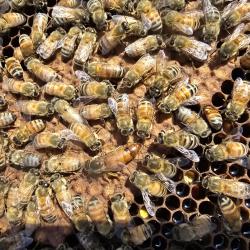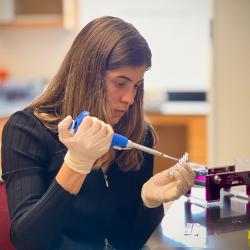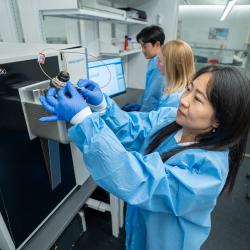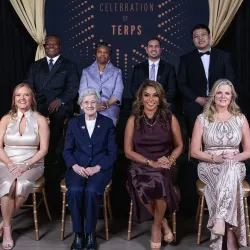Health Policy on the Hill
A congressional internship put UMD biological sciences major Vainavi Gambhir on a policy-driven path.
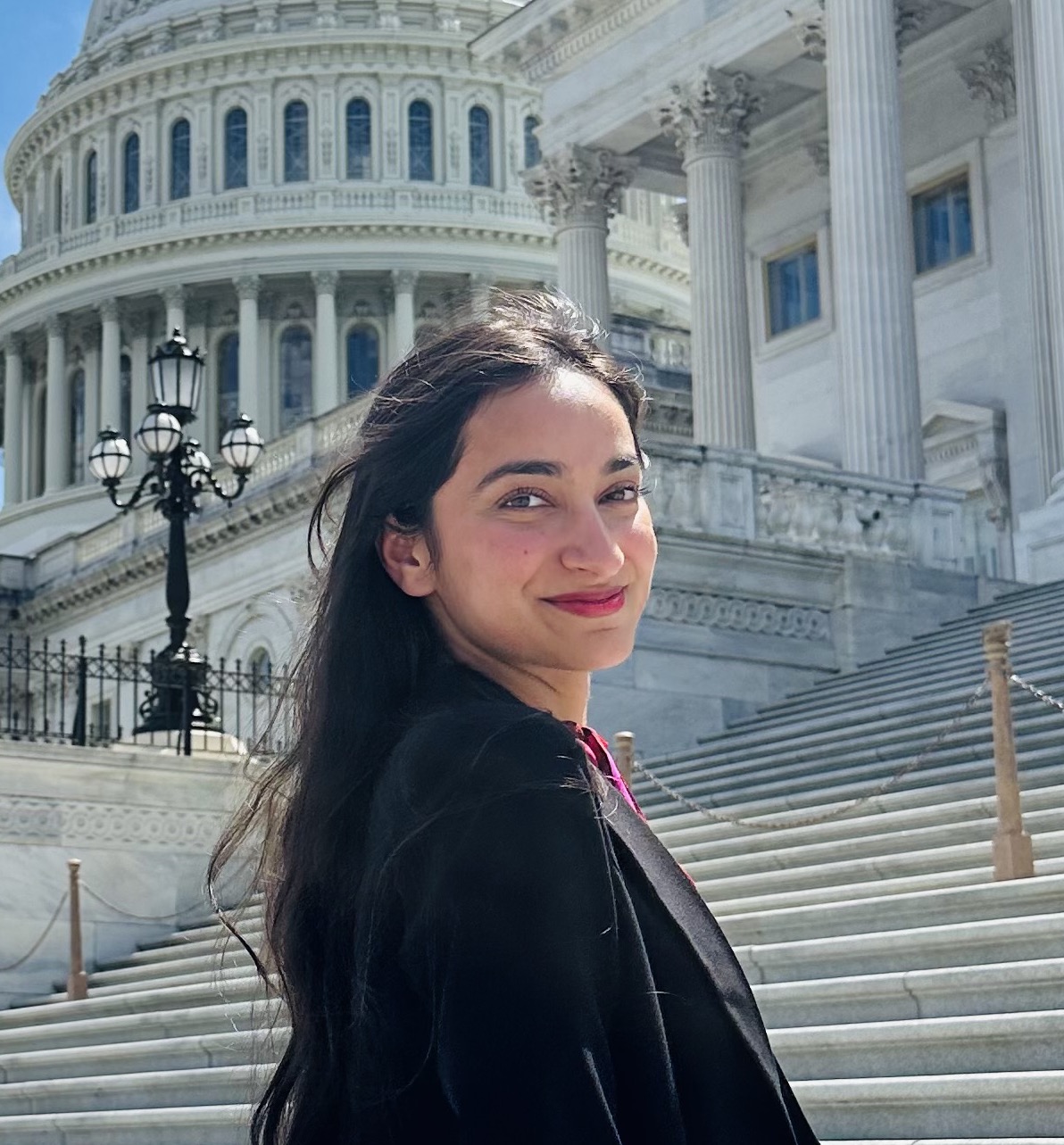
During a summer 2024 internship in the U.S. Senate, University of Maryland senior biological sciences major Vainavi Gambhir was shocked to learn that only 1.5% of federal funding is spent on infants, including their health and child care as well as housing and financial support for their families.
That statistic, shared during a “Babies in the Budget” briefing, made Gambhir realize she could leverage her expertise as an aspiring physician to effect change on Capitol Hill.
“We're a country with a huge health care budget, and yet so little money is given to families with children aged 0 to 3 to help their development and health during those crucial years,” said Gambhir, who interned in the offices of Maryland Senators Ben Cardin (who recently retired) and Chris Van Hollen. “I’d like to bring a clinician background to areas of government where that might be missing.”
Gambhir’s eye-opening internship, coupled with her experiences abroad and at UMD, renewed her commitment to a longtime goal: improving the health and wellness of children from all walks of life.
A holistic view
Gambhir has been interested in children’s health since she learned that a loved one faced mental health challenges as an adolescent. Because of their young age, their struggles were dismissed as “just a phase” and went unaddressed for years.
“That got me thinking: why can't we address these issues or at least be proactive about our health earlier on?” Gambhir said. “Why do we need to wait until adulthood for our experiences to be validated?”
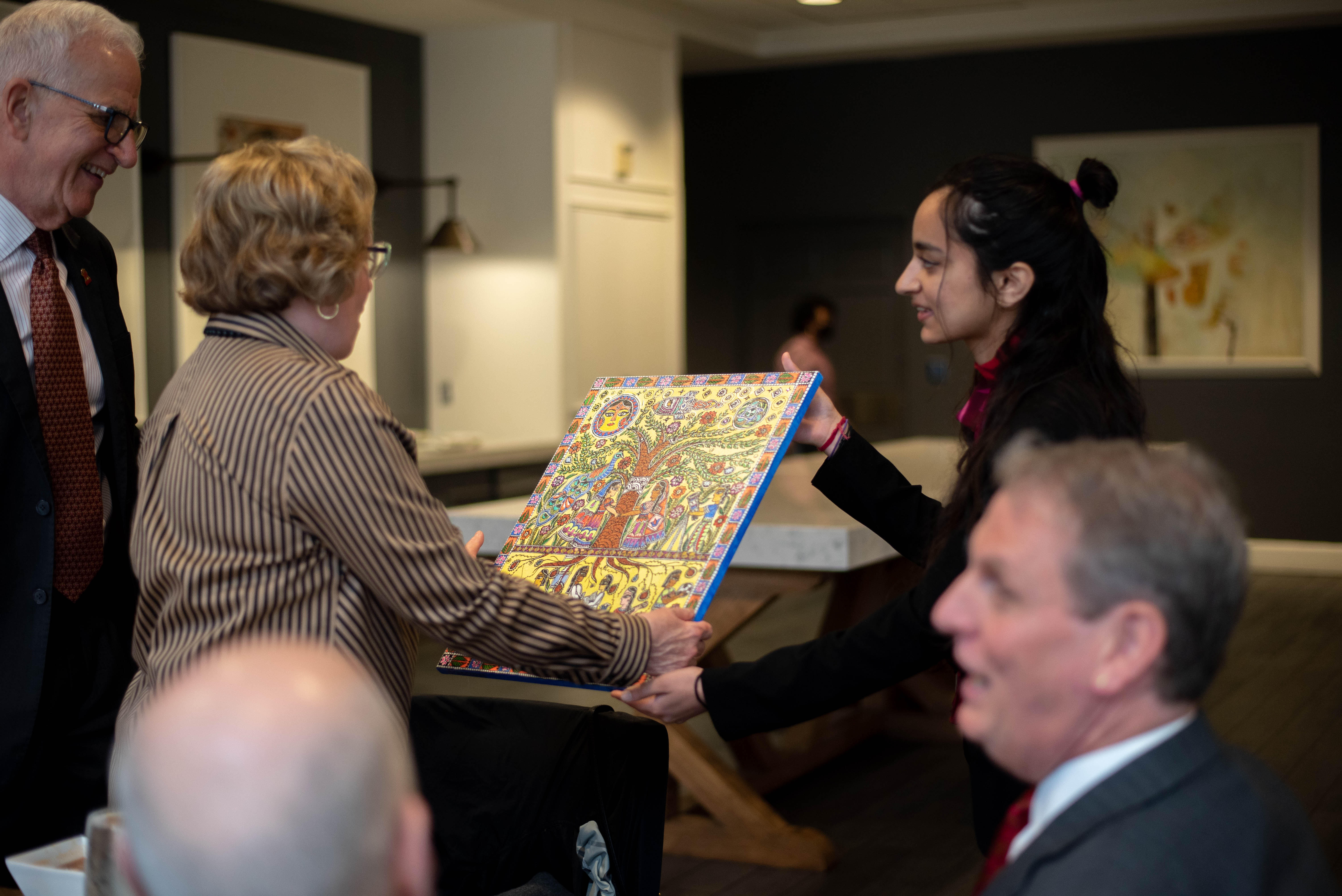
Gambhir’s views were further shaped by her experiences in Asia, where she spent most of her childhood. While living in Singapore—a small but culturally diverse country—Gambhir saw a variety of traditional medicine clinics next to modern hospitals. She set out to learn more, ultimately becoming a certified children’s yoga instructor and completing courses in Ayurveda, a holistic medicine system that emphasizes the importance of balance in lifestyle and nutrition.
These experiences broadened Gambhir’s perspective, making her realize that different approaches to health and wellness can coexist without contradicting each other.
“Singapore gave me the gift of viewing health through a different cultural lens,” Gambhir said. “In my role as a health care provider, I want to be someone who can connect with a patient practicing natural medicine and incorporate that into their complementary care plan.”
Singapore is also where Gambhir first started creating Madhubani art, a colorful and intricate style of painting that originated in India. While the art form traditionally depicts celebratory scenes of marriages and festivals, Gambhir uses it to shed light on issues affecting children around the world, including mental health, gender bias and child marriage.
“Madhubani is supposed to be very happy,” Gambhir said, “but by painting these serious and sadder themes around children, I’m using it to communicate sociocultural and health themes that are brushed under the carpet.”
A ‘life-changing’ experience
Halfway through high school, Gambhir relocated with her family to Bethesda, Maryland, where she eagerly chased new opportunities. She thought working for the National Institutes of Health (NIH) could be interesting, so she emailed people across the agency during the summer to ask about openings.
“I got rejected a ton, and it was overwhelming,” Gambhir said. “But then someone who I really wanted to work with, Dr. Lori Wiener from the National Cancer Institute, said, ‘OK, come and volunteer with us for two weeks and see how you like it.’”
Those two weeks became a four-year collaboration that continued after Gambhir graduated from high school and enrolled at UMD with a prestigious Banneker/Key Scholarship in 2021. At the NIH, Gambhir helped develop clinical resources for families and patients with RUNX1-Familial Platelet Disorder, a rare genetic condition in which people bleed and bruise more easily and have a higher risk of developing certain cancers. In one guidebook, she wrote a dialogue and glossary of terms that caretakers can use to explain the disorder to a recently diagnosed child.
“I think it was really valuable for me to learn about scientific communication because I'm entering a field where it only gets more technical and more complicated from here. It’s important that I know how to adapt my language to children and parents,” said Gambhir, who presented her work at two international conferences.
In 2022, Gambhir participated in the University Career Center’s Intern for a Day program and was paired with Uniformed Services University in Bethesda. This opportunity led to a summer studying potential therapeutics for rhabdomyosarcoma, a rare cancer. Gambhir also landed an internship the following summer with Fulbright Canada, enabling her to continue her cancer research in a small village in Quebec.
“I'm grateful to UMD because that Intern for a Day program was life-changing, and I don't say that lightly,” Gambhir said. “Fulbright Canada would not have been possible without the crucial background that I got from the lab in Uniformed Services University.”
Providing a platform

As a congressional intern, Gambhir enjoyed seeing a new side of health care. She worked with the two Maryland senators’ health teams, helping to field constituent calls and write memos on various topics, including cancer drug parity—the idea that different cancer treatments, including oral and IV medications, should be covered equally by insurance.
“It was very insightful,” Gambhir said. “The internship got me more interested in policy, persuasion and using my voice in different ways so that I don’t feel helpless.”
For Gambhir, one of her most fulfilling college experiences has been providing a platform for other students to speak up. Since her freshman year, she’s been involved with the University System of Maryland Student Council (USMSC), which represents 166,000 students across 12 institutions—including UMD—and three regional higher education centers.
She helped create the Board of Regents Student Excellence Scholarships to recognize important student contributions and launched a student speaker series that gives participants the chance to give talks or performances on topics of their choosing.
“The whole idea is that it's creating platforms or finding opportunities for students to feel like they can express themselves,” Gambhir said. “I think it connects back to my child health interest because it provides a similar feeling. It’s not just about child health but also empowering children—or in this case, college students—to advocate for themselves.”
Now the president of USMSC, Gambhir is excited to spend the rest of her senior year strengthening these initiatives.
After she graduates from UMD, she plans to attend the Icahn School of Medicine at Mount Sinai and looks forward to gaining hands-on experience in the field. While Gambhir has long sought a career in medicine, her experiences on Capitol Hill made her realize that becoming a physician is just the beginning.
“I want to be a physician and more,” Gambhir said. “I hope I can someday have a decision-making seat at the table in uplifting the health and well-being of vulnerable children across the country—and globe.”



